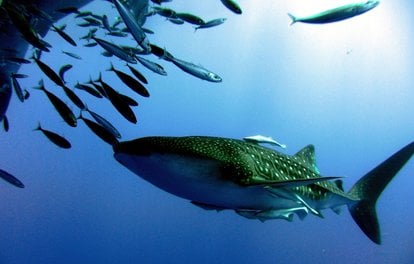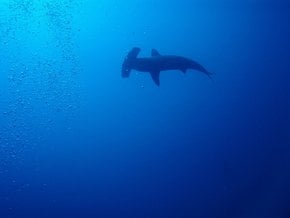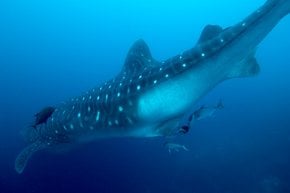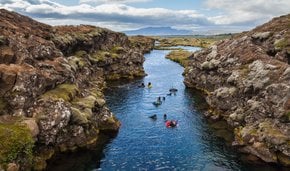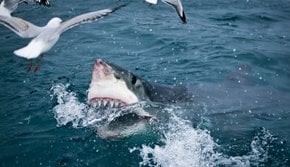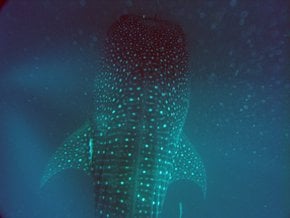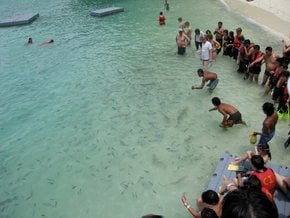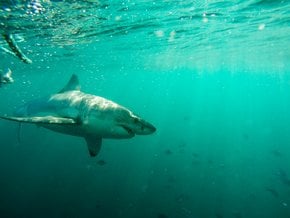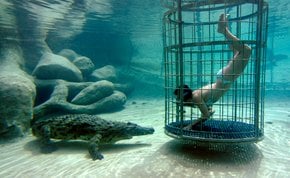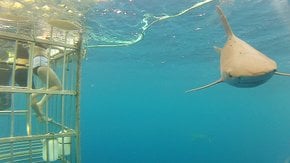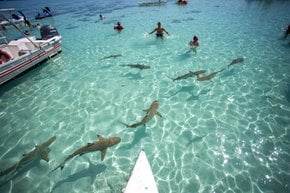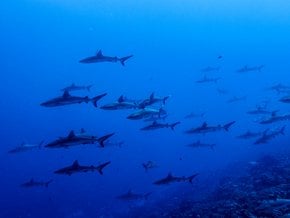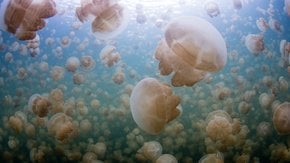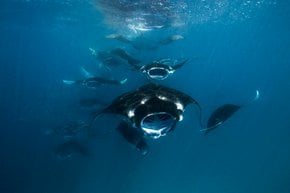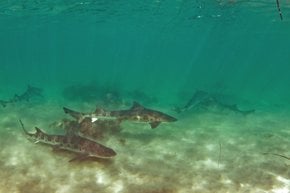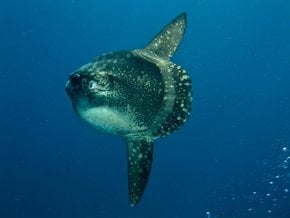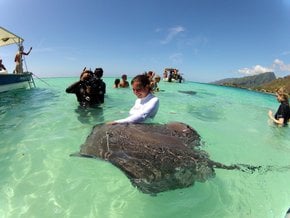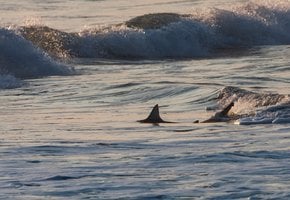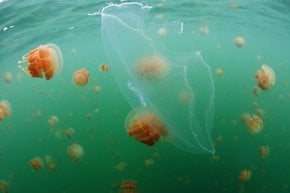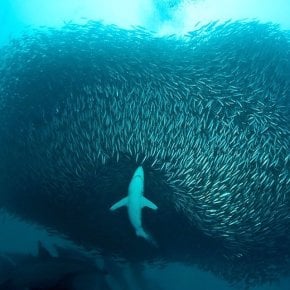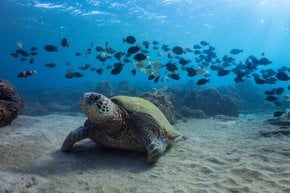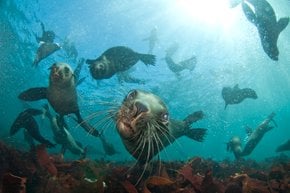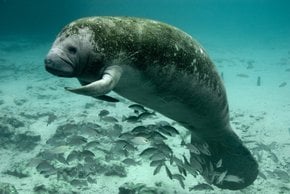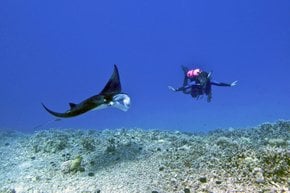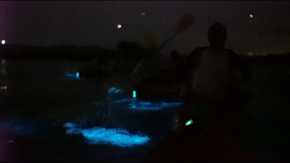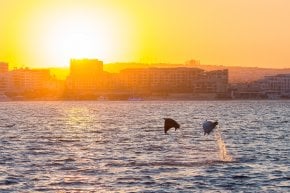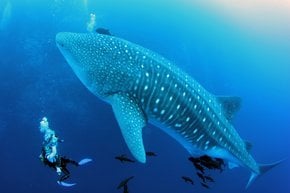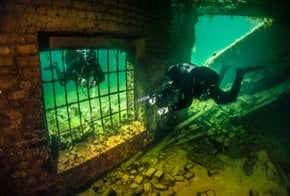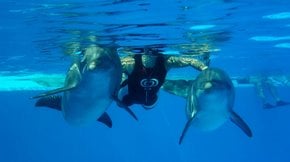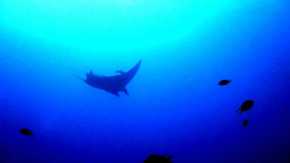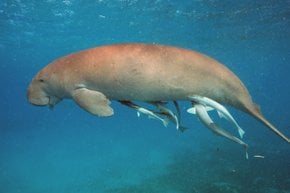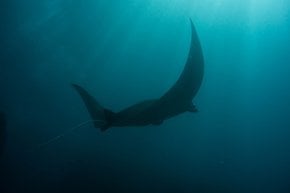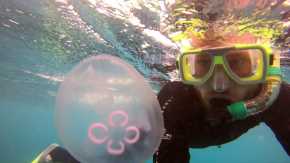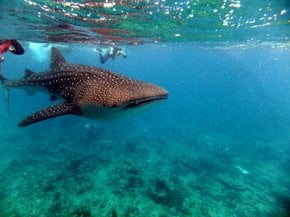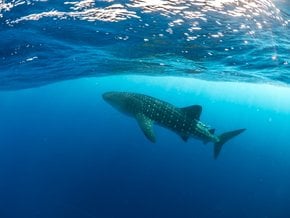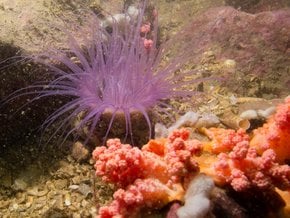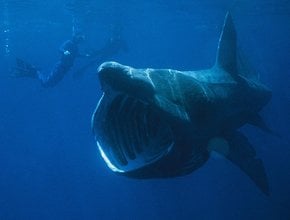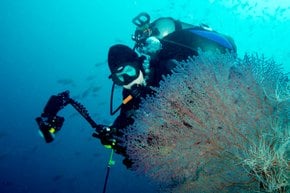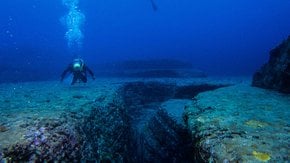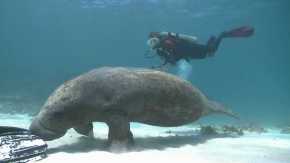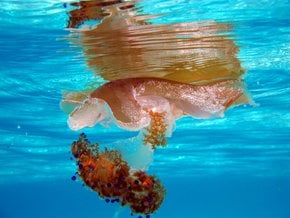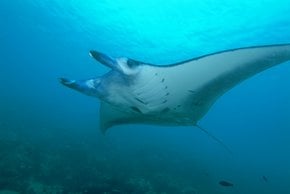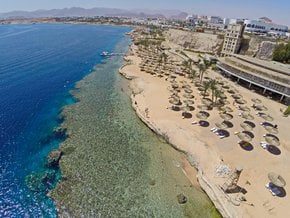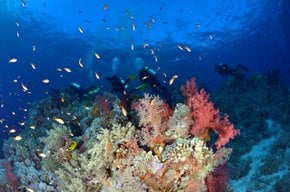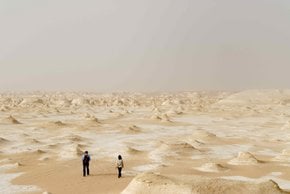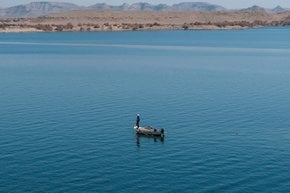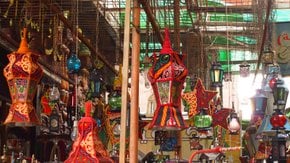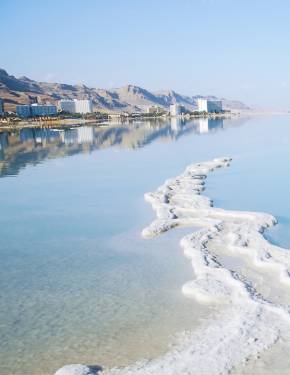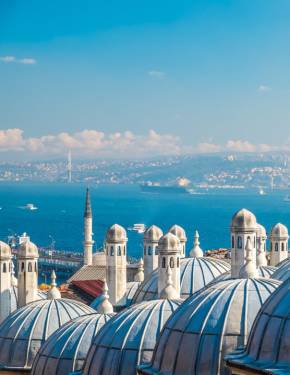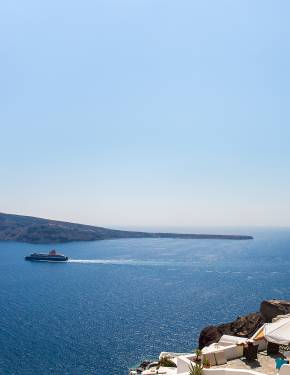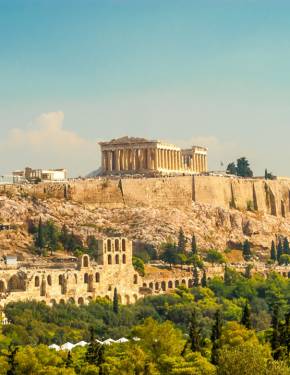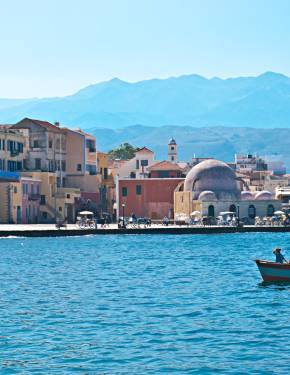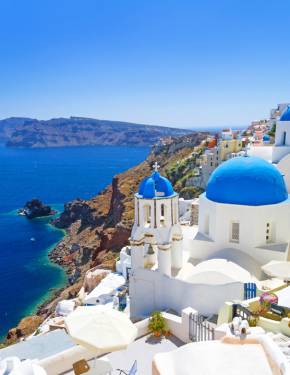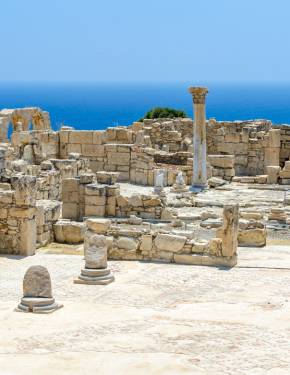Haie im Roten Meer in Ägypten 2026
Hast du schon immer davon geträumt, Haie im offenen Roten Meer schwimmen zu sehen? Keine schlechte Idee eigentlich, achte nur darauf nicht zu ihrer Beute zu werden
Beste Zeit: Mai bis August
Etwa 30 Arten von Haien leben tief unten im Roten Meer. Zu ihnen gehören aber eher friedliche Riffräuber (Weißspitzenhaie und Schwarzspitzenhaie, Riffhaie, Sandhaie, Leopardenhaie und Schwesternhaie) und andere, die für Menschen nicht so gefährlich sind (Hammerhaie, Mako mit kurzen Flossen, Schwarzflossenhaie, Silberhaie, Tigerhaie, graue Riffhaie).
Trotzdem solltest du wissen, dass die Walhai und Hammerkopf-Hai Saison im Roten Meer immer im Sommer auftritt, vor allem von Ende Mai bis Ende Juli. Diese Unterwasserräuber können im nördlichen Teil des Meeres und im Süden gesichtet werden.
Whale sharks and hammerhead sharks are most commonly seen in the summer, particularly from late May to late July. These giants of the sea can be spotted in both the northern and southern parts of the Red Sea.
Die beste Zeit, um Haie am Marsa Alam Tauchplatz oder am Jackson Reef in der Gegend von Tiran zu sehen, ist von Juli bis September und Daedalus von Mai bis August. Thresher Sharks sind auch sehr interessante Haie, mit ihren außergewöhnlich langem Schwanz und der spitzen Nase. Du kannst sie auch auf den ägyptischen Bruderinseln und an Marsa Alam Daedalus Tauchplätzen von September bis Februar sehen. Weitere coole Haitauchgänge sind Longimanus in Südägyptens Elphinstone von Oktober bis Januar.
Daedalus Reef offers sightings of various shark species from May to August. The oceanic whitetip sharks (Longimanus) are particularly prominent in South Egypt's Elphinstone from October to January.
For a unique experience, the sardine run in the south of Egypt during December and January is a must-see. This phenomenon attracts numerous predators, including dolphins, whales, and various shark species like the Bronze Whaler and Dusky Shark, creating a spectacle of marine life.
Prices for diving packages vary widely depending on the season, duration, and specific dive sites included. A typical one-day dive trip can range from $50 to $150, while multi-day liveaboard experiences, which offer the best chance to see a variety of sharks, might cost between $500 and $2000.
Certain dive sites within marine protected areas may require additional fees, typically around $10 to $20 per day. It's important to check with local dive operators for the most current information.
Für ein ganz besonderes Haierlebnis ist das Sardinenrennen ein Muss. Im Süden Ägyptens von Dezember-Januar wandern riesige Schwärme von Sardinen umher, welche ein sagenhaftes Rennen fabrizieren. Dieses natürliche Phänomen zieht extrem viele Raubtiere an, darunter Delfine, Wale und viele Haie, wie den Bronzewal und den Dusky Shark. Die Mantastrahlen ernähren sich auch von den Planktonblüten. Für welchen Ort du auch immer dich entscheidest, sei einfach sicher und aufmerksam und behandle diese majestätischen Geschöpfe mit dem Respekt, den sie verdienen.
Popular dive spots such as Marsa Alam, Hurghada, and Sharm El Sheikh are well-connected by international airports, with a range of accommodation options from budget hostels to luxury resorts.
These locations are equipped with comprehensive diving infrastructure, including gear rental shops, professional dive instructors, and medical facilities.
For those interested in exploring beyond diving, the surrounding areas offer beautiful beaches, desert excursions, and cultural landmarks. The Ras Mohammed National Park, near Sharm El Sheikh, is a renowned marine reserve, which offers snorkeling, bird-watching, and hiking opportunities.
Understanding shark behavior is crucial for safe and enjoyable diving experiences. Despite their fearsome reputation, many sharks in the Red Sea are shy and avoid human contact. Key species to observe include the oceanic whitetip, silky sharks, and the pelagic thresher shark.
When diving with sharks, it's essential to follow safety guidelines such as avoiding sudden movements, maintaining a safe distance, and not attempting to touch or feed the sharks. Professional dive guides provide detailed briefings to ensure safe interactions with these magnificent creatures.
Sharks in the Red Sea play a crucial role in maintaining the health of the marine ecosystem. As apex predators, they help regulate the populations of other marine species, ensuring a balanced environment. Their presence indicates a healthy reef system, as they often prey on weak or sick animals, preventing the spread of disease.
Conservation of shark populations in the Red Sea is critical, as many species are threatened by overfishing and habitat destruction. Egypt has implemented measures to protect marine life, including establishing marine protected areas and regulating fishing practices. Additionally, there are numerous local and international organizations working towards the conservation of sharks through research, education, and advocacy.

